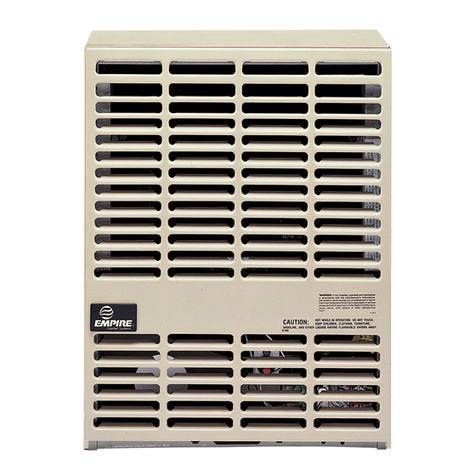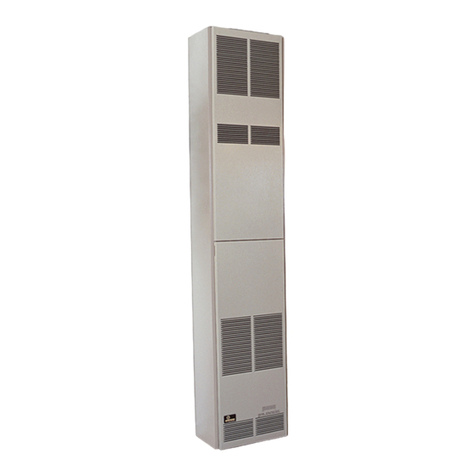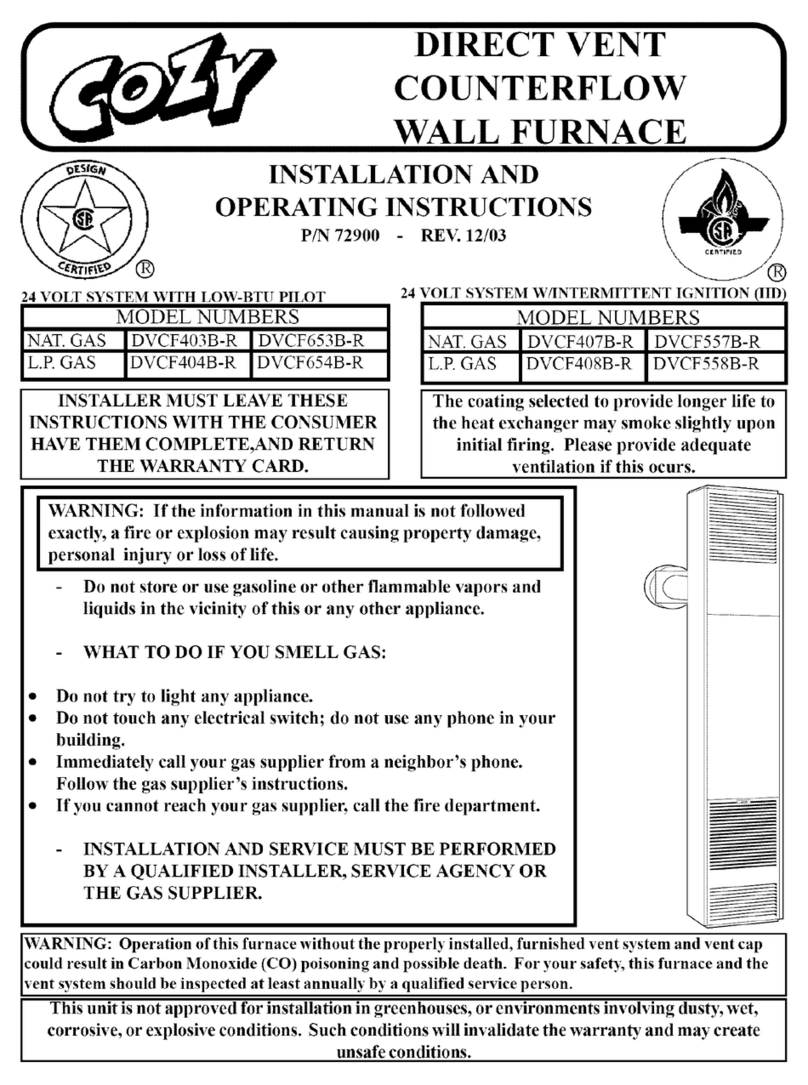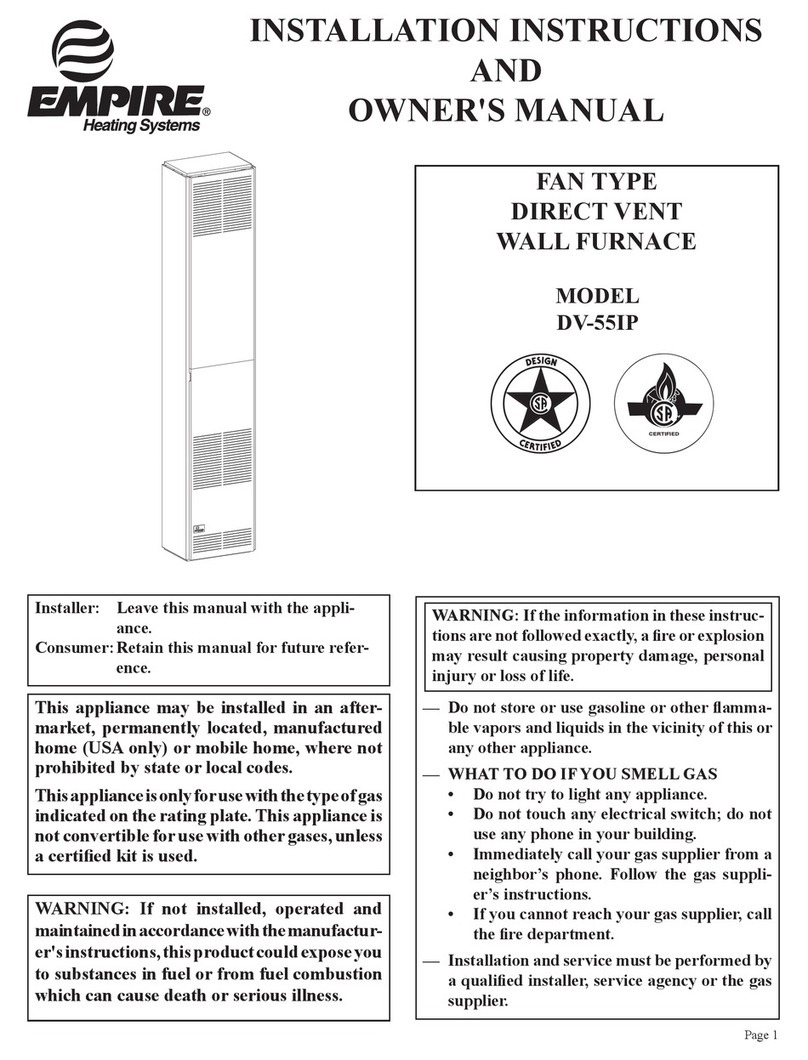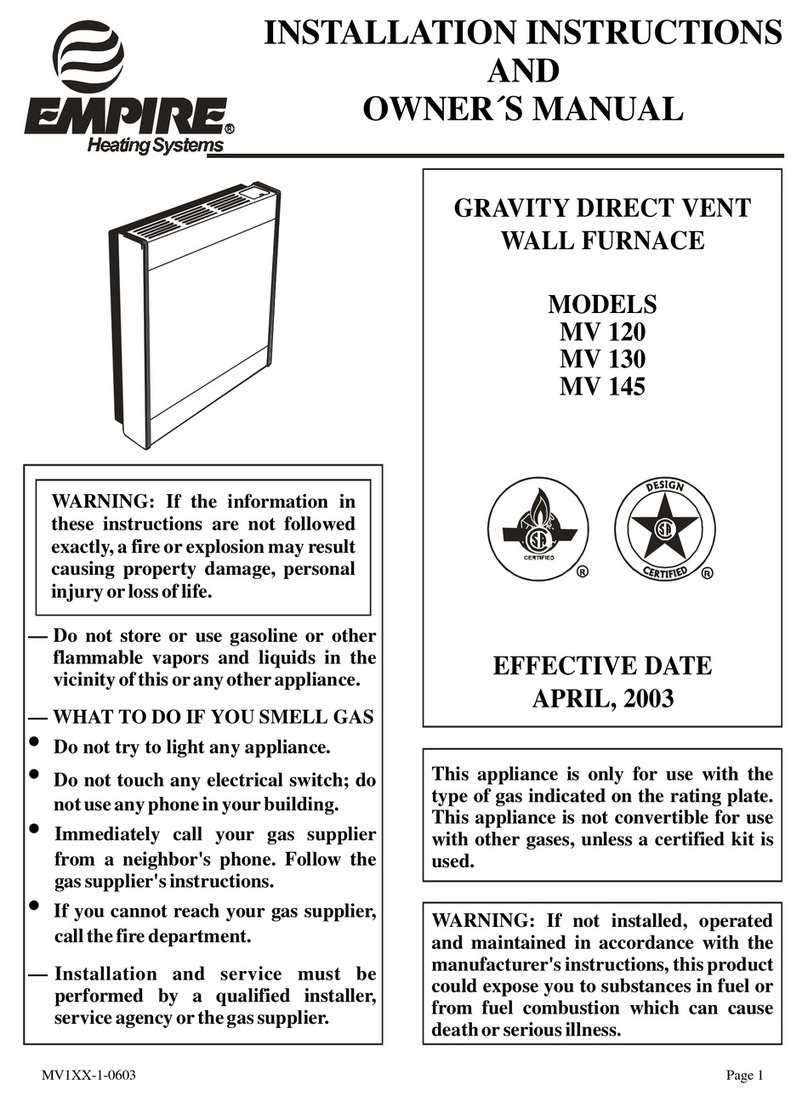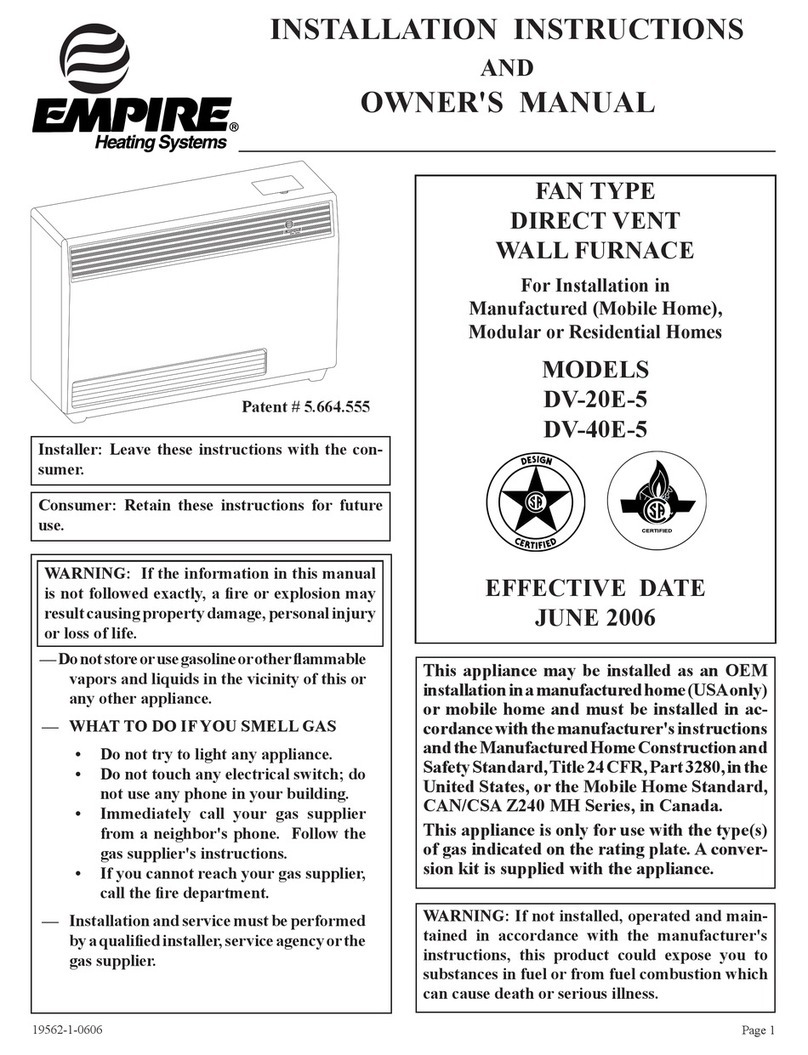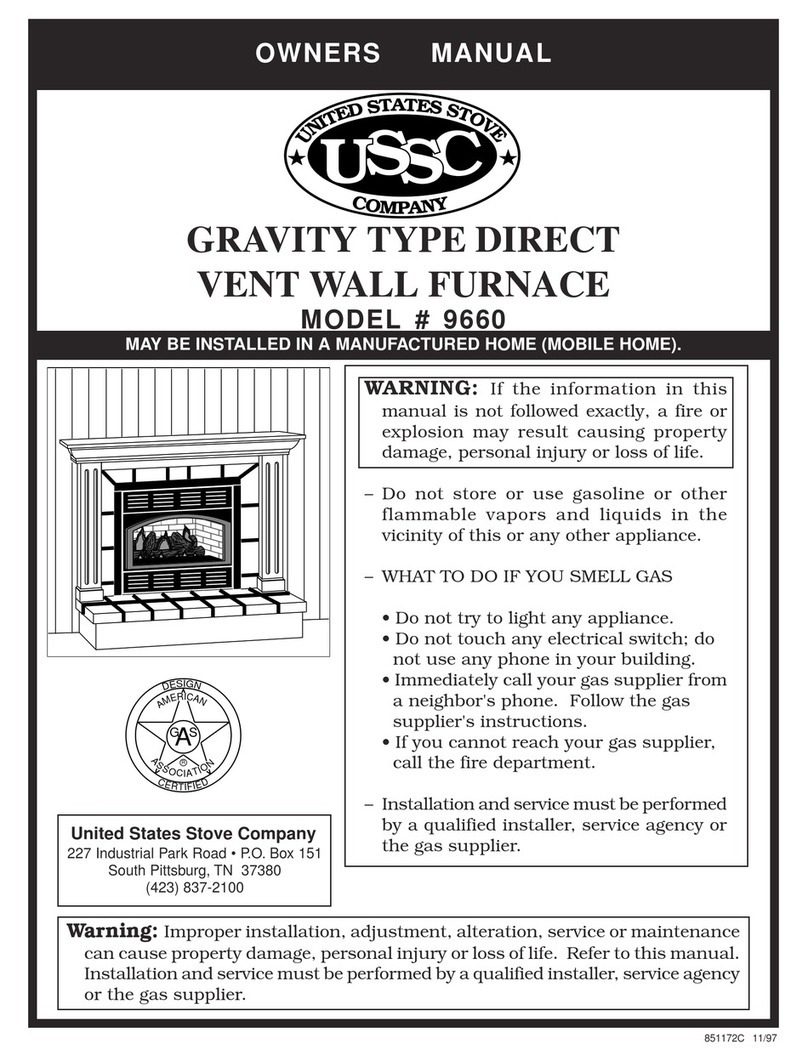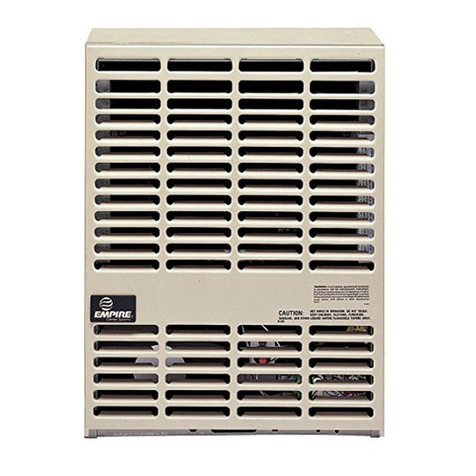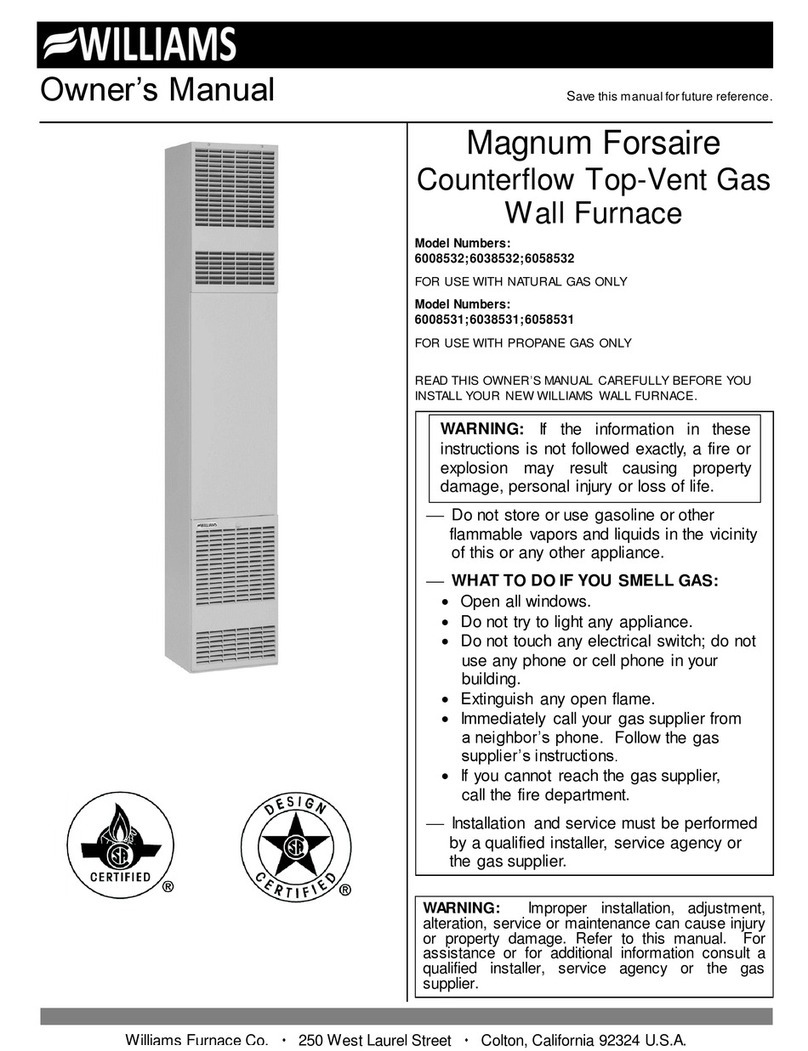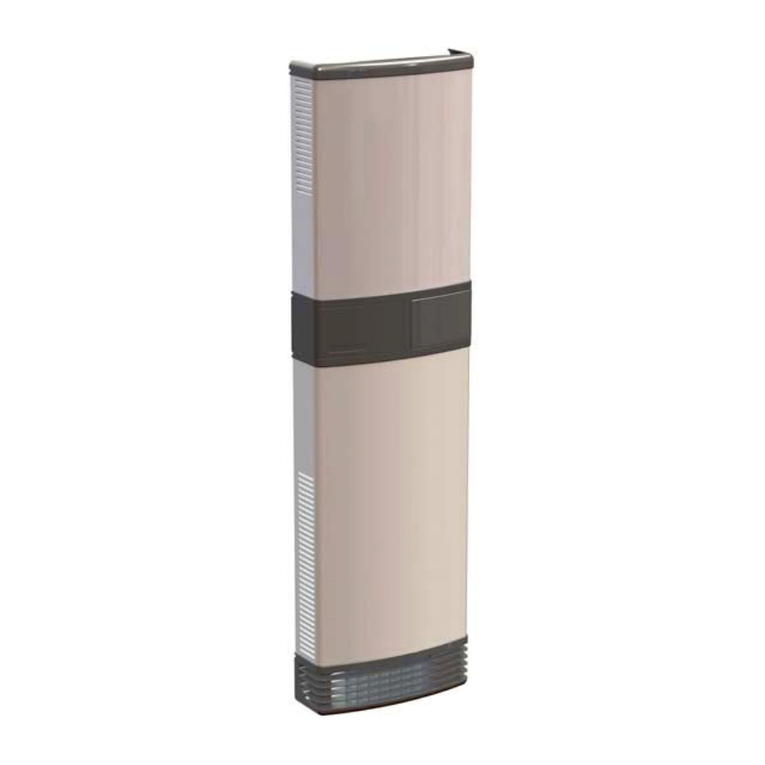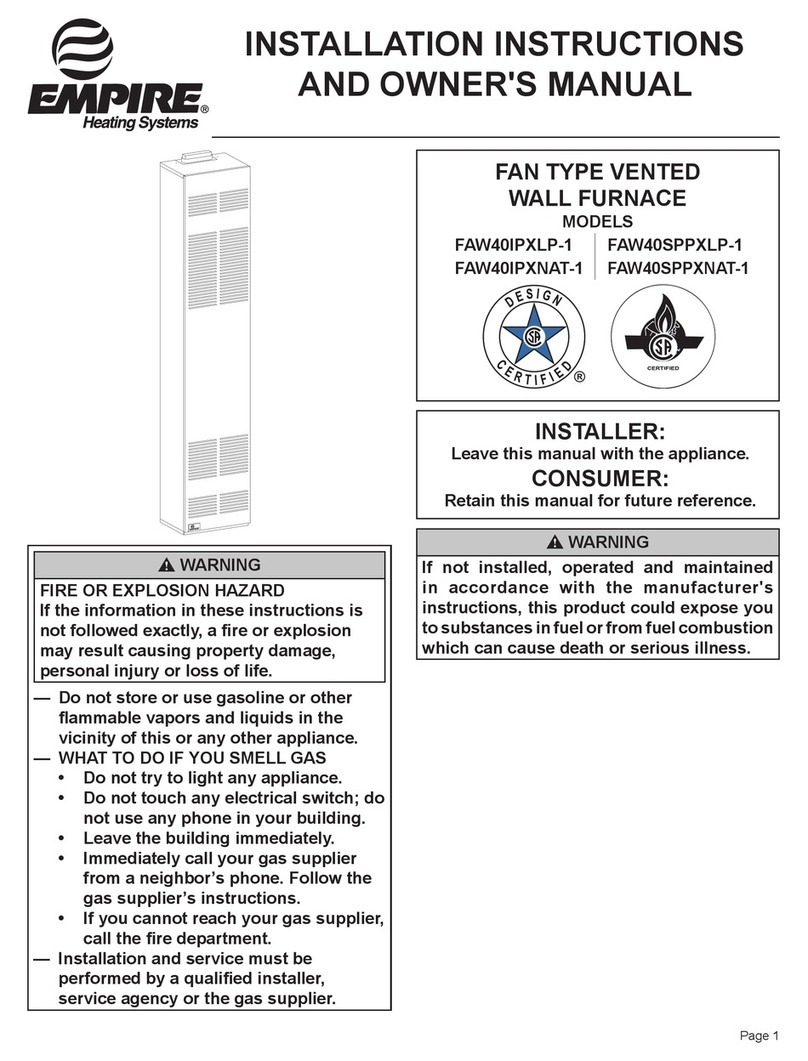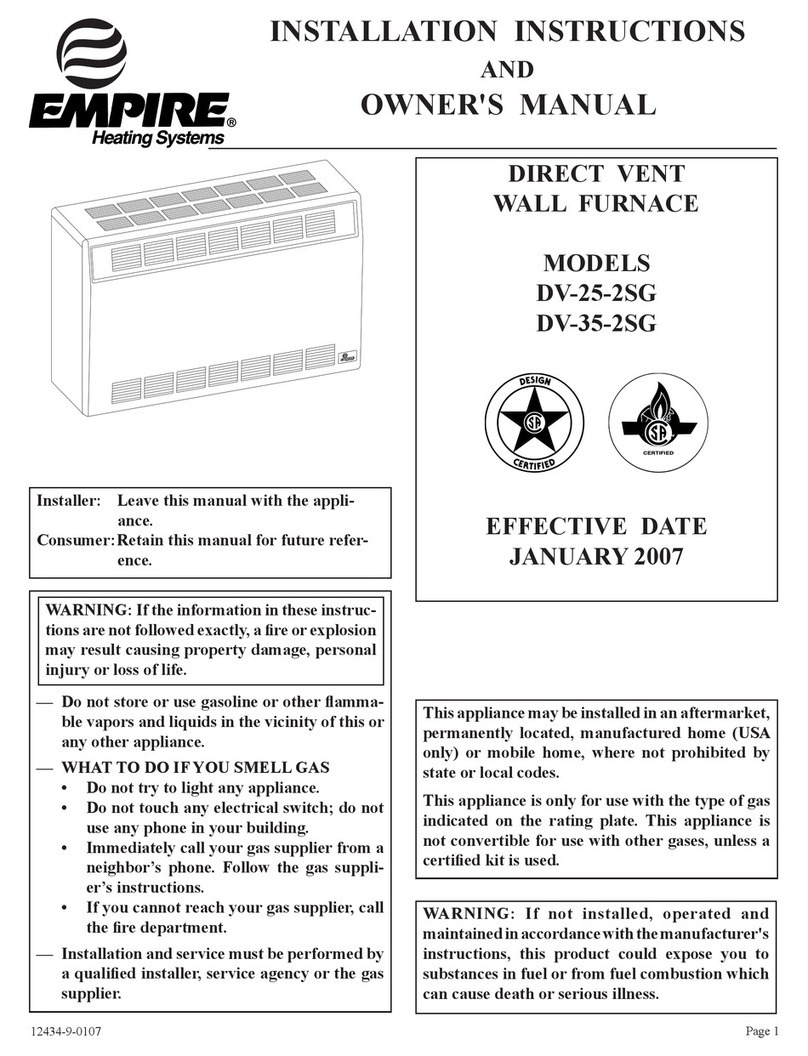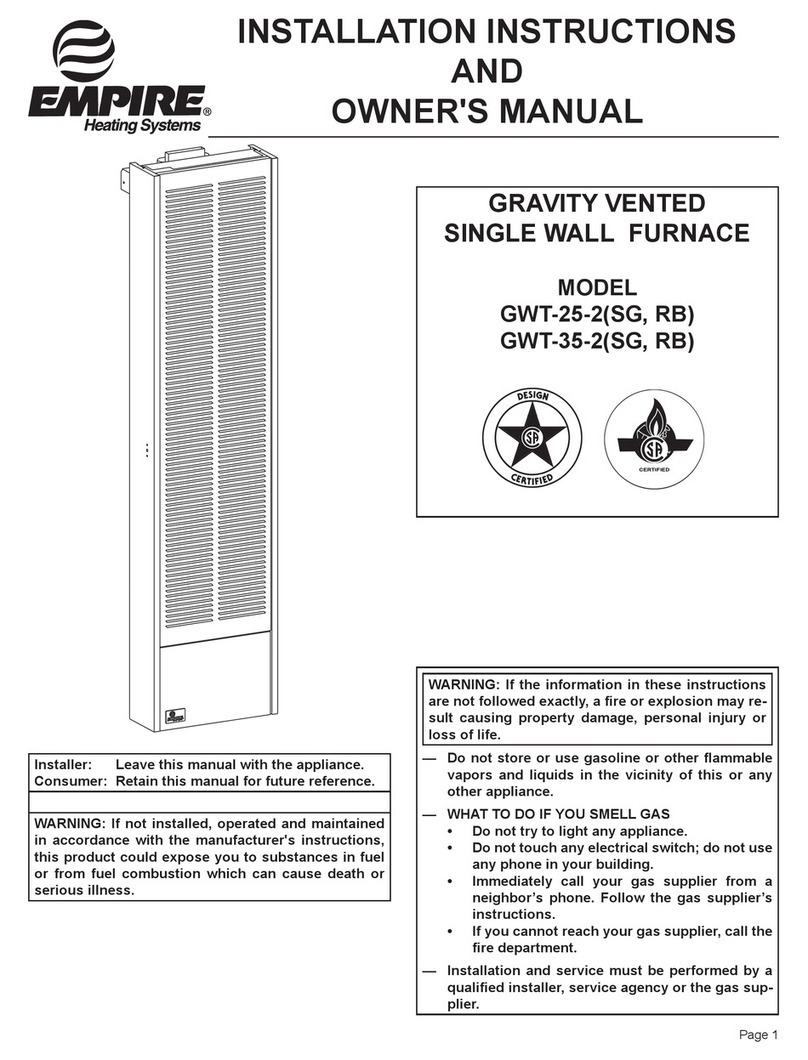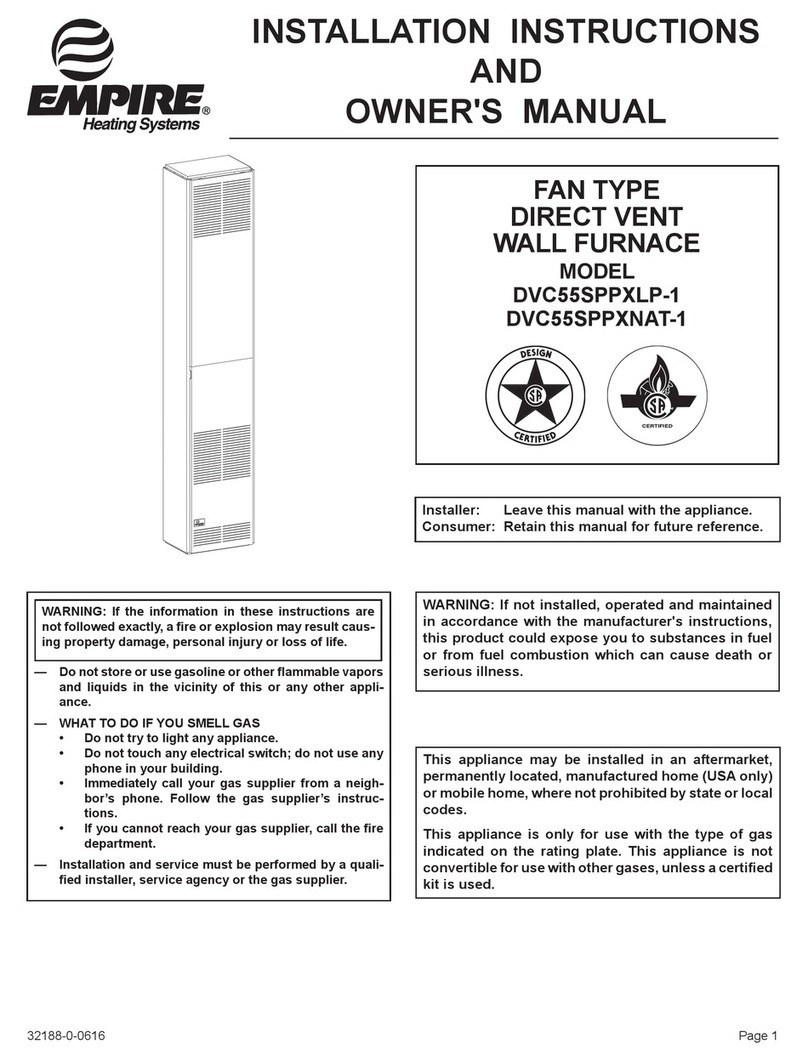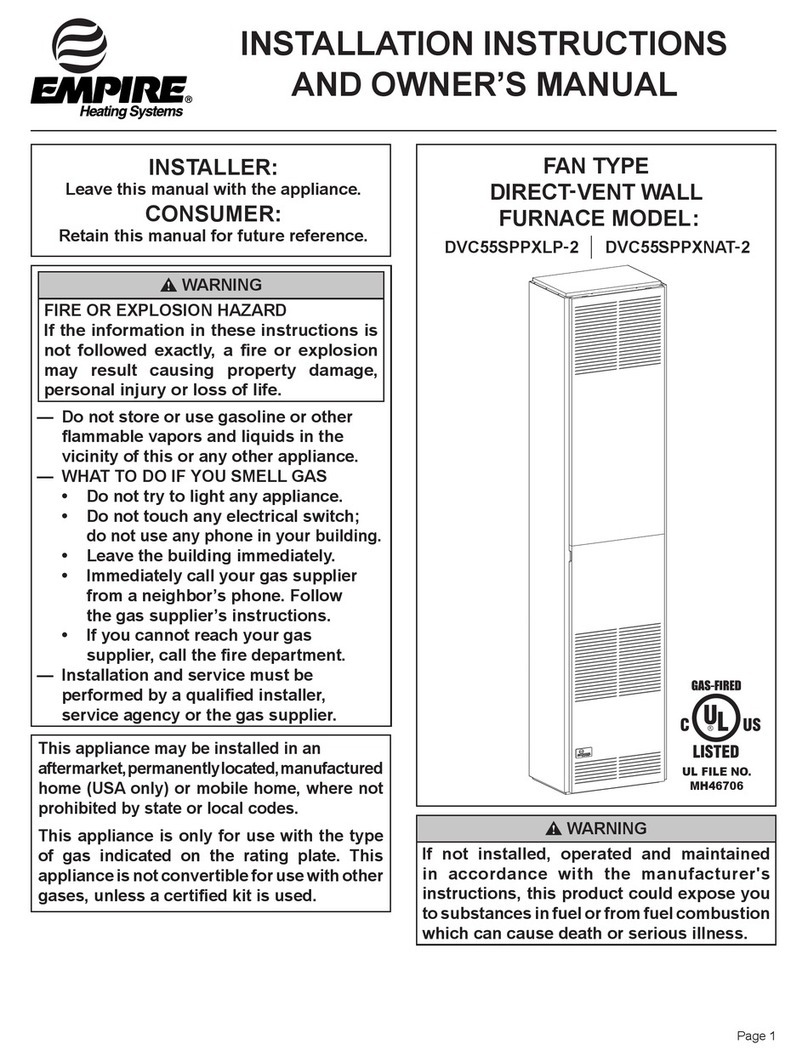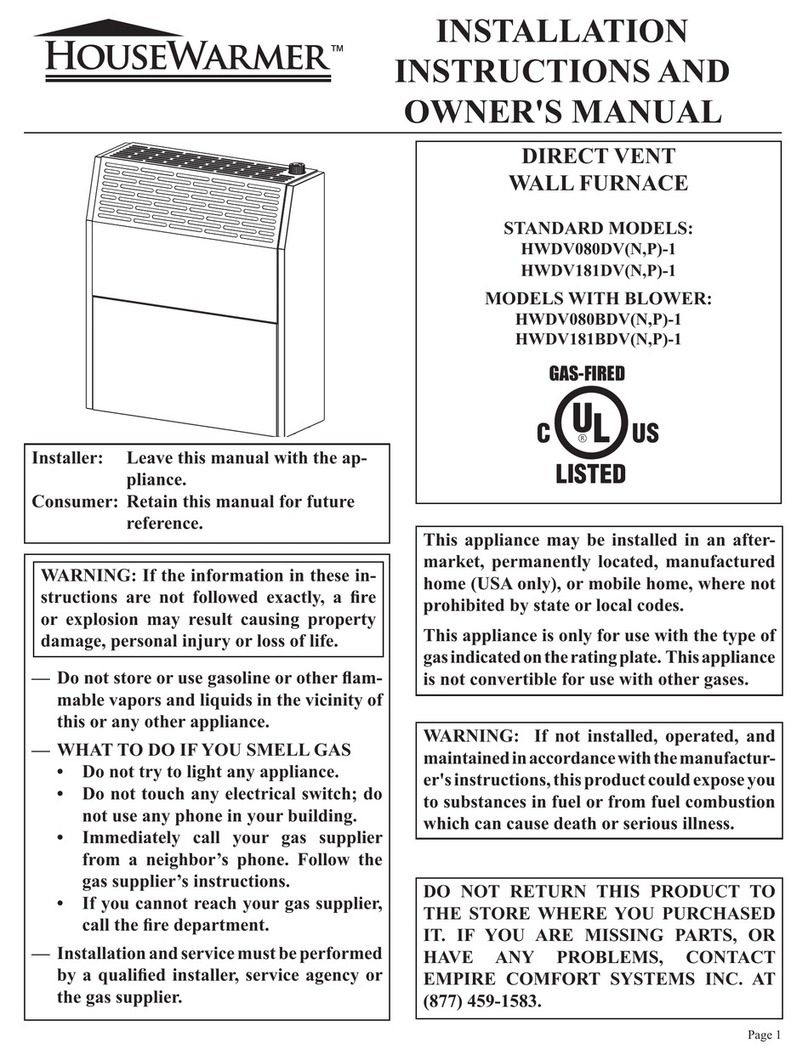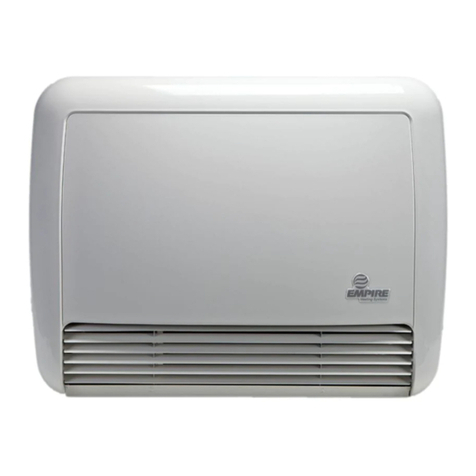
3
WS-415-63/11.24.98
NAPOLEON gas fireplaces are manufactured under the strict Standard of the world recognized
ISO9002 Quality Assurance Certificate.
NAPOLEON products are designed with superior components and materials, assembled by trained craftsmen
who take great pride in their work. The burner and valve assembly are leak and test-fired at a quality test
station. The complete fireplace is thoroughly inspected by a qualified technician before packaging to ensure that
you, the customer, receives the quality product that you expect from NAPOLEON.
NAPOLEON GAS FIREPLACE PRESIDENT'S LIFETIME LIMITED WARRANTYNAPOLEON GAS FIREPLACE PRESIDENT'S LIFETIME LIMITED WARRANTY
NAPOLEON GAS FIREPLACE PRESIDENT'S LIFETIME LIMITED WARRANTYNAPOLEON GAS FIREPLACE PRESIDENT'S LIFETIME LIMITED WARRANTY
NAPOLEON GAS FIREPLACE PRESIDENT'S LIFETIME LIMITED WARRANTY
The following materials and workmanship in your newThe following materials and workmanship in your new
The following materials and workmanship in your newThe following materials and workmanship in your new
The following materials and workmanship in your new NAPOLEONNAPOLEON
NAPOLEONNAPOLEON
NAPOLEON gas fireplace aregas fireplace are
gas fireplace aregas fireplace are
gas fireplace are
warranted against defects for as long as you own the fireplace. This covers: combustionwarranted against defects for as long as you own the fireplace. This covers: combustion
warranted against defects for as long as you own the fireplace. This covers: combustionwarranted against defects for as long as you own the fireplace. This covers: combustion
warranted against defects for as long as you own the fireplace. This covers: combustion
chamber, heat exchanger, stainless steel burner, phazer™ logs and embers, ceramic glasschamber, heat exchanger, stainless steel burner, phazer™ logs and embers, ceramic glass
chamber, heat exchanger, stainless steel burner, phazer™ logs and embers, ceramic glasschamber, heat exchanger, stainless steel burner, phazer™ logs and embers, ceramic glass
chamber, heat exchanger, stainless steel burner, phazer™ logs and embers, ceramic glass
(thermal breakage only), gold plated parts against tarnishing, porcelainized enamelled com-(thermal breakage only), gold plated parts against tarnishing, porcelainized enamelled com-
(thermal breakage only), gold plated parts against tarnishing, porcelainized enamelled com-(thermal breakage only), gold plated parts against tarnishing, porcelainized enamelled com-
(thermal breakage only), gold plated parts against tarnishing, porcelainized enamelled com-
ponents and aluminum extrusion trims.ponents and aluminum extrusion trims.
ponents and aluminum extrusion trims.ponents and aluminum extrusion trims.
ponents and aluminum extrusion trims.
Electrical (110V and millivolt) components and wearable parts such as blowers, gas valves,Electrical (110V and millivolt) components and wearable parts such as blowers, gas valves,
Electrical (110V and millivolt) components and wearable parts such as blowers, gas valves,Electrical (110V and millivolt) components and wearable parts such as blowers, gas valves,
Electrical (110V and millivolt) components and wearable parts such as blowers, gas valves,
thermal switch, switches, wiring, remote controls, ignitor, gasketing, and pilot assembly arethermal switch, switches, wiring, remote controls, ignitor, gasketing, and pilot assembly are
thermal switch, switches, wiring, remote controls, ignitor, gasketing, and pilot assembly arethermal switch, switches, wiring, remote controls, ignitor, gasketing, and pilot assembly are
thermal switch, switches, wiring, remote controls, ignitor, gasketing, and pilot assembly are
covered andcovered and
covered andcovered and
covered and NAPOLEONNAPOLEON
NAPOLEONNAPOLEON
NAPOLEON will provide replacement parts free of charge during the firstwill provide replacement parts free of charge during the first
will provide replacement parts free of charge during the firstwill provide replacement parts free of charge during the first
will provide replacement parts free of charge during the first
year of the limited warranty.year of the limited warranty.
year of the limited warranty.year of the limited warranty.
year of the limited warranty.
Labour related to warranty repair is covered free of charge during the first year. RepairLabour related to warranty repair is covered free of charge during the first year. Repair
Labour related to warranty repair is covered free of charge during the first year. RepairLabour related to warranty repair is covered free of charge during the first year. Repair
Labour related to warranty repair is covered free of charge during the first year. Repair
work, however, requires the prior approval of an authorized company official. Labour costswork, however, requires the prior approval of an authorized company official. Labour costs
work, however, requires the prior approval of an authorized company official. Labour costswork, however, requires the prior approval of an authorized company official. Labour costs
work, however, requires the prior approval of an authorized company official. Labour costs
to the account ofto the account of
to the account ofto the account of
to the account of NAPOLEONNAPOLEON
NAPOLEONNAPOLEON
NAPOLEON are based on a predetermined rate schedule and any repairare based on a predetermined rate schedule and any repair
are based on a predetermined rate schedule and any repairare based on a predetermined rate schedule and any repair
are based on a predetermined rate schedule and any repair
work must be done through an authorizedwork must be done through an authorized
work must be done through an authorizedwork must be done through an authorized
work must be done through an authorized NAPOLEONNAPOLEON
NAPOLEONNAPOLEON
NAPOLEON dealer.dealer.
dealer.dealer.
dealer.
CONDITIONS AND LIMITCONDITIONS AND LIMIT
CONDITIONS AND LIMITCONDITIONS AND LIMIT
CONDITIONS AND LIMITAA
AA
ATIONSTIONS
TIONSTIONS
TIONS
NAPOLEON warrants itsproducts againstmanufacturing defectsto theoriginal purchaseronly --i.e., theindividual orlegal entity(registered customer) whosename appearson the
warrantyregistrationcard filed withNAPOLEON -- providedthatthepurchase was madethroughanauthorized NAPOLEONdealerand issubjecttothe following conditionsandlimitations:
Thisfactory warrantyis nontransferableand maynot be extended whatsoever byany ofour representatives.
Thegas fireplacemust beinstalled bya licenced,authorized servicetechnician orcontractor. Installationmust bedone inaccordance withthe installationinstructions includedwith
theproduct andall local andnational buildingand fire codes.
This limited warranty does notcover damages caused bymisuse, lack of maintenance,accident, alterations, abuse orneglect and parts installed fromother manufacturers willnullify
this warranty.
Thislimited warranty furtherdoesnot cover anyscratches,dents, corrosionordiscolouring caused byexcessiveheat, abrasive andchemicalcleaners norchippingon porcelain enamel
parts,mechanical breakageof PHAZER™logs andembers, nor any venting components used inthe installationof thefireplace.
NAPOLEON warrants its stainless steel burners against defects in workmanship and material for life, subject to the following conditions: During the first 10 years NAPOLEON will
replace or repair the defective parts at our option free of charge. From 10 years to life, NAPOLEON will provide replacement burners at 50% of the current retail price.
Inthe firstyearonly,this warrantyextendsto therepair or replacementof warrantedpartswhich aredefective in materialor workmanshipprovided that theproduct hasbeen operated
inaccordance withthe operationinstructions and under normal conditions.
Afterthe firstyear,with respectto this President'sLimited Lifetime Warranty, NAPOLEONmay, at itsdiscretion, fullydischarge all obligationswith respecttothis warrantyby refunding
tothe originalwarranted purchaserthe wholesaleprice ofany warrantedbut defectivepart(s).
Afterthe firstyear, NAPOLEONwill notbe responsiblefor installation,labour orany othercosts orexpenses relatedto thereinstallation ofa warrantedpart, andsuch expensesare
notcovered bythis warranty.
Notwithstandingany provisions containedin this President'sLimitedLifetime Warranty,NAPOLEON’S responsibility underthis warranty isdefined as aboveandit shallnotin any event
extendto anyincidental,consequential orindirect damages.
Thiswarrantydefines theobligationsandliability ofNAPOLEONwith respect tothe NAPOLEON gasfireplaceandany otherwarrantiesexpressed or impliedwithrespectto thisproduct,
itscomponents oraccessories areexcluded.
NAPOLEON neither assumes,nor authorizes anythird partyto assume,on itsbehalf, any otherliabilities withrespect tothe sale ofthis product.NAPOLEON will notbe responsible
for:over-firing, downdrafts,spillage causedby environmentalconditions suchas rooftops,buildings, nearbytrees, hills,mountains, inadequatevents orventilation, excessiveventing
configurations,insufficient makeup air, or negative air pressures which mayor maynot becaused bymechanical systems such as exhaust fans, furnaces, clothes dryers, etc.
Any damages to fireplace, combustionchamber, heat exchanger, brasstrim or othercomponent due to water, weather damage,long periods of dampness, condensation,damaging
chemicals or cleaners will not be the responsibility of NAPOLEON.
The bill of sale or copy will be required together with a serial number and a modelnumber when making any warranty claims from your authorized dealer. The warranty registration
cardmust bereturned withinfourteen daysto registerthe warranty.
NAPOLEONreserves theright tohave its representative inspect any product or part thereof prior to honouring any warranty claim.
ALLSPECIFICATIONS AND DESIGNS ARESUBJECT TOCHANGE WITHOUT PRIORNOTICE DUETO ON-GOING PRODUCTIMPROVEMENTS. NAPOLEON®IS AREGISTERED
TRADEMARKOFWOLFSTEEL LTD. PATENTS U.S.5.303.693.801-CAN.2.073.411,2.082.915.©WOLFSTEELLTD.
